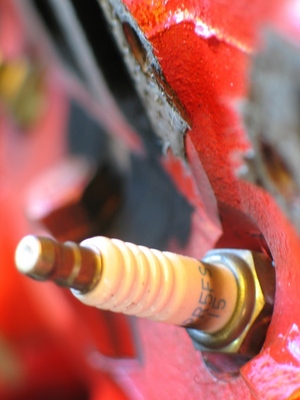In order for an engine to fire properly and operate efficiently, it must be equipped with quality spark plugs. Spark plugs don’t last indefinitely, and they shouldn’t be ignored. You must replace them according to the specifications recommended by the manufacturer. Also, check spark plug cables regularly for cracks, splits, corrosion, and other damage that could ultimately interfere with their performance.
Generally speaking, spark plugs should be checked approximately every 10,000 miles or once per year, and they should be replaced every 20,000 miles or every two years. You don’t have to hire a professional to check and replace them. With the proper tools and information, you can easily check and replace them yourself.
Buying Spark Plugs and Supplies
Begin by choosing a trusted brand of spark plugs, and search manufacturer listings for the part number according to the make and model of your engine. You’ll also need compressed air, a spark plug socket, a ratchet wrench, a spark plug gauge, tape for labeling cables, silicone dielectric grease, and penetrating oil to help prevent cross threading when you replace them.
Spark Plug Wire Removal
Allow the engine to cool completely, and label the spark plug wires with tape before removing them. That way you can easily recall their location. After labeling, remove the spark plug wire boots by twisting and pulling them. Blow away any debris in the open port with compressed air.
Spark Plug Removal
Position a spark plug socket over the first plug, and remove it by turning it counterclockwise with a ratchet wrench. As each one is removed, label the spark plugs according to location and condition. This will be helpful in identifying cylinder problems if spark plugs have carbon on the tips, oil, or other abnormal deposits. Continue the procedure until all of the spark plugs have been removed. If any are difficult to remove, don’t attempt to force them. Try a U-joint with the ratchet wrench.
Gapping Plugs
Before you replace old spark plugs, look for a sticker under the hood of the vehicle that contains information specifying the recommended gap for new ones. Otherwise, consult the owner’s manual for specifications, and use a spark plug gauge to check and adjust the gap if necessary. The spark plug gauge should be able to slip in between the electrodes without force, but not too easily. To make an adjustment, use the gauge bracket to bend the L-shaped electrode until it meets the recommended gap.
How to Install New Spark Plugs
Avoid cross threading the new plugs by coating them with penetrating oil before installation. Don’t over tighten the spark plugs, and install them carefully. Those with a gasket should be turned with a ratchet wrench one-quarter to one-half of a turn, and all others should be tightened approximately one-sixteenth of a turn. Before reconnecting the cable wires, apply a coat of silicone dielectric grease to the interior of the rubber boots.
Take detailed notes regarding maintenance preformed on the vehicle so you’ll know when to check parts and replace them in the future. Doing so will ensure optimal performance through regular maintenance, and you’ll be able to keep your vehicle running smooth as long as you own it.






